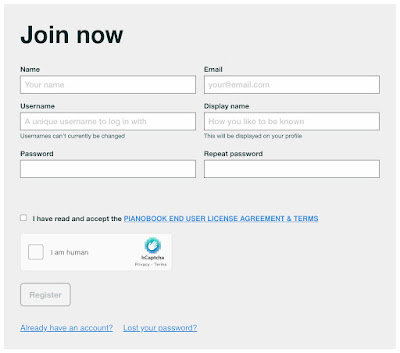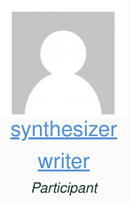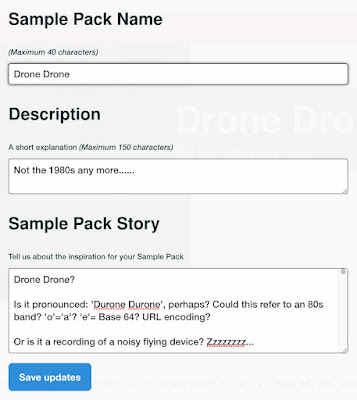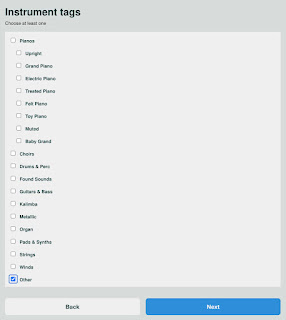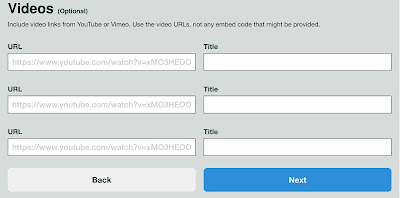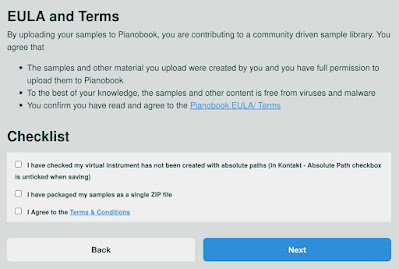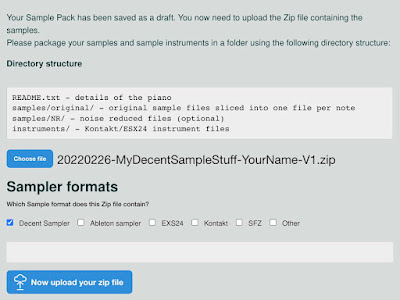Fate can be very cruel. There's always been an interesting 'rule' in the audio synthesizer world which can be expressed quite simply:
Never give them exactly what they actually want!
And you can see this if you ever get Gear Acquisition Syndrome (GAS) and try to find a synth with a specific set of characteristics. You will almost always find several close contenders, but one vital and different feature will always be missing from each of them, and none of them will ever have all of the vital features. As Mandalorians say:
This is The Way...
In fact, it applies to more than just synthesizers. When you start to get to that fabled 10,000 hours of experience in something, then you start to notice that just about everything comes in small groups where it is impossible to ever get the 'perfect' set of vital features - one of them will always be left off, and all of the examples will be slightly flawed in one way or another. So you can never get exactly what you want - in terms of features or functionality. In some cases, it is possible to buy two items and get all of the features, but working with them is then much more difficult. In bad cases, you need to buy three or more to get all of the features you require, and working with them can be almost impossible...
(Maybe I am swimming against the tide/current here. Perhaps this is just the intrinsic way that the world works. But...surely not?)
So, here's an example... All I wanted was a:
Dual Stereo Modulation Effects Pedal.
Source Audio started me on this quest <Sound of dramatic orchestral music indicating confidence and optimism...>. Their Ventris Dual Stereo Reverb is a superb example of something that ticks absolutely every single one of the vital features that I needed in a reverb:
- Stereo Input and Output
- 2 Separate DSPs for 2 separate effects at once
- Flexible Routing of the Audio (DSPs in series, or parallel)
- An External Software Editor (on a computer) for presets (Oh, and Presets as well!)
...and loads more 'nice but not vital' features! (MIDI, Expression Pedal input...)
 |
| https://www.sourceaudio.net/ventris-dual-reverb.html |
Anyways, Source Audio got a loyal and very happy fan when I bought a Ventris. It is one of my favourite effects pedals. The Empress EchoSystem and Reverb are very close seconds with almost every feature covered, but they do not have external software editors (and even the amazing Zoia has a third party librarian that seems to be gradually evolving some editor-like functionality, so there is hope...). And... the truly gorgeous Poly Effects Beebo has an on-board touch screen, but no external software editor...
So, note that here we have an example of a product that has ALL of the vital features! This exception kind of proves that it is possible to have near-perfection - always having one vital feature missing is not a rule!
But the Source Audio Ventris does have one drawback - it isn't a modulation pedal! Now, I know it isn't meant to be a modulation pedal, so I went to their web-site ( https://www.sourceaudio.net ) and looked for the equivalent dual stereo modulation effects pedal, which wasn't there, of course... There were some very, very nice effects pedals, but no dual stereo modulation effects pedal... Waaah!
Hang on, this means that Source Audio know how to specify, design and engineer something that has total coverage of all of the vital features, but then they don't apply it to modulation? (Or Echo in their 'Nemesis' product, which is another story: a non-dual echo pedal...)
Maybe I was being too broad in my definition of modulation, so I removed some of the more esoteric varieties (ring modulation, auto-filter, harmonic tremolo, Leslie Speaker emulations, and even effects that arguably are not modulation effects at all, but which seem to turn up in some 'modulation' pedals: bit crusher, sample rate, overdrive...), and I ended up with an alarmingly basic 'modulation effects' list:
- Tremolo (and stereo pan)
- Vibrato
- Phaser
- Flanger
- Chorus
And even with this deliberately simpler list of features, Source Audio didn't have anything in this space - other than buying multiple mono pedals! So, I started to look for a similar dual stereo modulation effects pedal from elsewhere (sorry, Source Audio!) As you may know, there aren't very many effects pedals out there, and so this only took a few moments...
...
...
...
OK, so I lied. The reality is that there are a lot of manufacturers of effects pedals, and there are enormous numbers of pedals out there. In fact, 'enormous' isn't a big enough word! Zillions, perhaps! Of every shape, type, colour and with every feature set you could possibly think of... except, wherever I searched, for those four vital features that I specified above (Stereo, Dual DSP, Series/Parallel Audio Routing, and a Software editor). Oh, and not always providing the 5 basic modulation effects above...
Pedals that came close!
Loads of effects pedals nearly met my requirements, but they all failed for one feature or another. The GFI System Synesthesia dual modulation effects pedal is so very, very close, ticking all of the boxes except... it has a monophonic input! (Being generous, a couple of my synthesizers do have monophonic outputs, but the vast majority have stereo outputs!) The Strymon Mobius modulation effects pedal only has one effect at once. And so it went on... Lots of mono pedals offering modulation effects, rather less stereo ones (and quite a lot of mono input, stereo output ones, like the otherwise wonderful GFI Synesthesia! (Which is arguably the GFI Wavelogic Mk III, but that really is another story, for another time...)).
Perhaps going for high-end, professional 'big-box' effects pedal was my mistake, so I descended into the darker recesses of Amazon and looked at budget pedals. And here I found another almost-close contender - the Joyo Vision Dual Stereo Modulation Effects Pedal, which didn't have presets, didn't have a software editor (actually, no USB or MIDI, or...) and I'm not sure what the audio specifications are like... But, hey, it was a total bargain in terms of price! And it did more than the 5 basic modulation effects, and was stereo in and out! (So I have one on order!)
 |
| The Joyo Vision Dual Stereo Modulation Effects Pedal. Photo by Rombo on Unsplash |
I even looked at buying two mono modulation pedals and seeing if that would work, but switching between the series and parallel audio routings would be a separate hardware project all of its own. For example, Empress make separate mono phaser, tremolo and chorus/vibrato/flanger pedals, which would mean acquiring six pedals and would require a patch-bay to give flexible routing, but it would look astonishing and would cost a small fortune! Maybe there's a YouTube video opportunity here... Oh, but I'm forgetting: no presets! Waaaah!
And that's where I am at the moment. Despite a lot of searching, I'm very confident that I have accidentally overlooked the one pedal (or maybe several pedals!) that does precisely what I want, and I'm sure that someone will take great delight in informing me about it (keep reading!). But why does finding it have to be so difficult? Why is a perfectly reasonable set of vital features not so obvious to pedal designers that I should be spoiled for choice, overwhelmed, etc.?
A Competition With No Prize (other than being featured here)!
Which set me thinking... If any pedal manufacturer happens to be reading this, then feel free to let me know about your pedal that meets (or exceeds!) the 4 (four) vital features, and the 5 basic modulation effects, and if I like the look of it (I'm really looking for a professional spec device, of course), I will buy it and review it right here in this blog (I might even do a YouTube video!)! Your company could be my next 'Source Audio' (I must stop mentioning their name!)... Go on - show fate that you are superior! Show me and my readers that you CAN provide what we actually want!
MOD Devices Dwarf and DuoX
I have already mentioned the Empress Zoia, and Poly Effects Beebo, so I should also mention the two current multi-effects (and more) devices from MOD Devices. This time, there are ticks for all the features, including an external software editor, and the only barrier is the price, which is, as some people might say, 'reassuring exclusive'. I have a feeling, at the back of my mind, that I will eventually end up buying a MOD Dwarf or MOD DuoX, but there's also a little voice saying: 'You could buy a synthesizer with that money!' and so I get pulled in two directions and end up doing neither...
What IS a 'Modulation' Effect?
Here's my 'basic' list again:
- Tremolo (and stereo pan)
- Vibrato
- Phaser
- Flanger
- Chorus
Looking at these in terms of what they do, then there are volume changes (tremolo, stereo pan), pitch changes (vibrato, chorus), and spectral changes or dynamic filtering (phaser, flanger). The common bit to all of them is that they are not static - whatever is being 'modulated', that change is either cyclic (via an LFO), or an envelope (either the actual volume envelope of an audio signal, or a multi-segment arbitrary waveshape). This means that we now have the beginnings of a taxonomy of modulation effects (which sounds much more complex than it actually is: a classification system), and which can be used to see if there are any gaps that are not currently exploited:
 |
| Basic 'Modulation' Effects |
I have deliberately used 'Auto-Wah' to mean the repeated cyclic variation of a filter here, and used a more unusual and descriptive term: 'Envelope-Wah' for when it is the envelope that changes the filter frequency - this is sometimes called 'Touch-Wah' and a few other terms... Note that envelope-controlled pitch control doesn't have anything in the box - I couldn't think of (or find after a search) any effects pedal that does this, but, as I have noted in this blog post, this doesn't mean that such effects don't exist! it merely means that I haven't found them yet...
Two other 'envelope-controlled' effects are missing as well: Envelope-Phase and Envelope-Flange. once again, I don't recall ever hearing (or seeing) and effects pedal that did this...
The simplest envelope is a ramp, where the value just rises or falls, and this is sometimes called 'Ramping', so I have not added an extra column - but there are effects pedals where the Ramping can affect parameters like the LFO speed, and so you might like to imagine an even more detailed table...
Having called these the 'basic' modulation effects, there are lots of ways to extend and enhance the table. Tremolo and Stereo Pan are a good example - whilst they are both cyclic changes to the volume, the use of two channels in the Stereo Pan makes it a very different effect. So we shoiuld add a new row for 'Pan'. Harmonic Tremolo splits the incoming audio into two frequency bands and applies different tremolo rates and depths to them, and so we need to accomodate that as well, which means adding a 'Frequency Bands' row to the table.
'Cyclic' is a bit vague, so let's split that column into two: one for LFO-waveform-based continually cycling effects, and a second column for step-sequencer based effects where the waveform is user-controllable and arguably more 'arbitrary' waves are possible. I've looked at the outer edges of this type of effect in a previous blog post...
All of these revisions give a much more comprehensive table:
 |
| A more detailed 'Modulation Effects' table... |
This table reveals some additional empty boxes (I have filled in the Auto-Bend box because someone MUST make a pedal that does that!). I suspect that Source Audio's innovative 'Ultra Wave' pedals fill most of these gaps! (Source Audio again! My fandom goes into overdrive!)
Step-sequencing a harmonic tremolo (or pan position) sounds like it could be an interesting area to explore...
Feedback - the Zoom MS-70CDR
Felix Petrescu aka waka_x reminded me via Twitter about the classic Zoom MS-70CDR effects pedal, which is very interesting... (I have a Zoom L-12 mixer, for instance!) Firstly, because, as you might have inferred, I tend to go for the high-end, professional-sized 'big box' pedals with lots of rotary controls, but for modulation, then I might be persuaded to try something more compact - as far as I can see, there is no MIDI and no external software editor, though (just librarians)... Secondly, since I was intrigued enough, I tried to buy one, and discovered that they aren't currently available on Amazon in the UK, and Andertons, my standard music retailer, weren't expecting them to be in stock until the end of April, so I'm now waiting... For something which has been around for nearly ten years, then I'm now wondering if a new version is imminent, perhaps? Or maybe in these times of chip shortages, there's a much simpler explanation. Anyway, I will soon find out... So huge thanks to Felix, and I'm looking into it. (There are lots of Zoom MS-70CDR resources on the InterWeb... I was very impressed with this one from Tonelib.net. )
Previously, I have also looked at another budget mono in, stereo out effects device: The Valeton GP-100.
Feedback - your idea here
As I said earlier in this blog post, there are SO MANY effects pedals out there, that it is almost impossible to keep yourself informed on all of them, all the time. Which makes me suspect that there's still a hidden gem lurking out there. An example of a near-miss would be the Wampler Terraform, which is stereo in, stereo out, has MIDI, presets, lots of rotary controls, and is only missing the dual DSP 'engine' approach, because it only does one modulation effect at once. But it's a very nice offering from a well-known pedal manufacturer... Close!
Perfection?
I tried to specify the 'perfect' guitar pedal in a previous blog post...
Final thoughts...
Maybe 'Dual' modulation is the 'Next Big Thing', and I am asking about it just a little bit too early?
Alternatively, maybe I should stop dithering and go to the MOD Devices web-site?
It definitely looks like 'Source Audio' are an innovative effects company to follow more closely!
---
If you find my writing helpful, informative or entertaining, then please consider visiting this link:
 Buy me a coffee (Encourage me to write more posts like this one!)... or...
Buy me a coffee (Encourage me to write more posts like this one!)... or...

